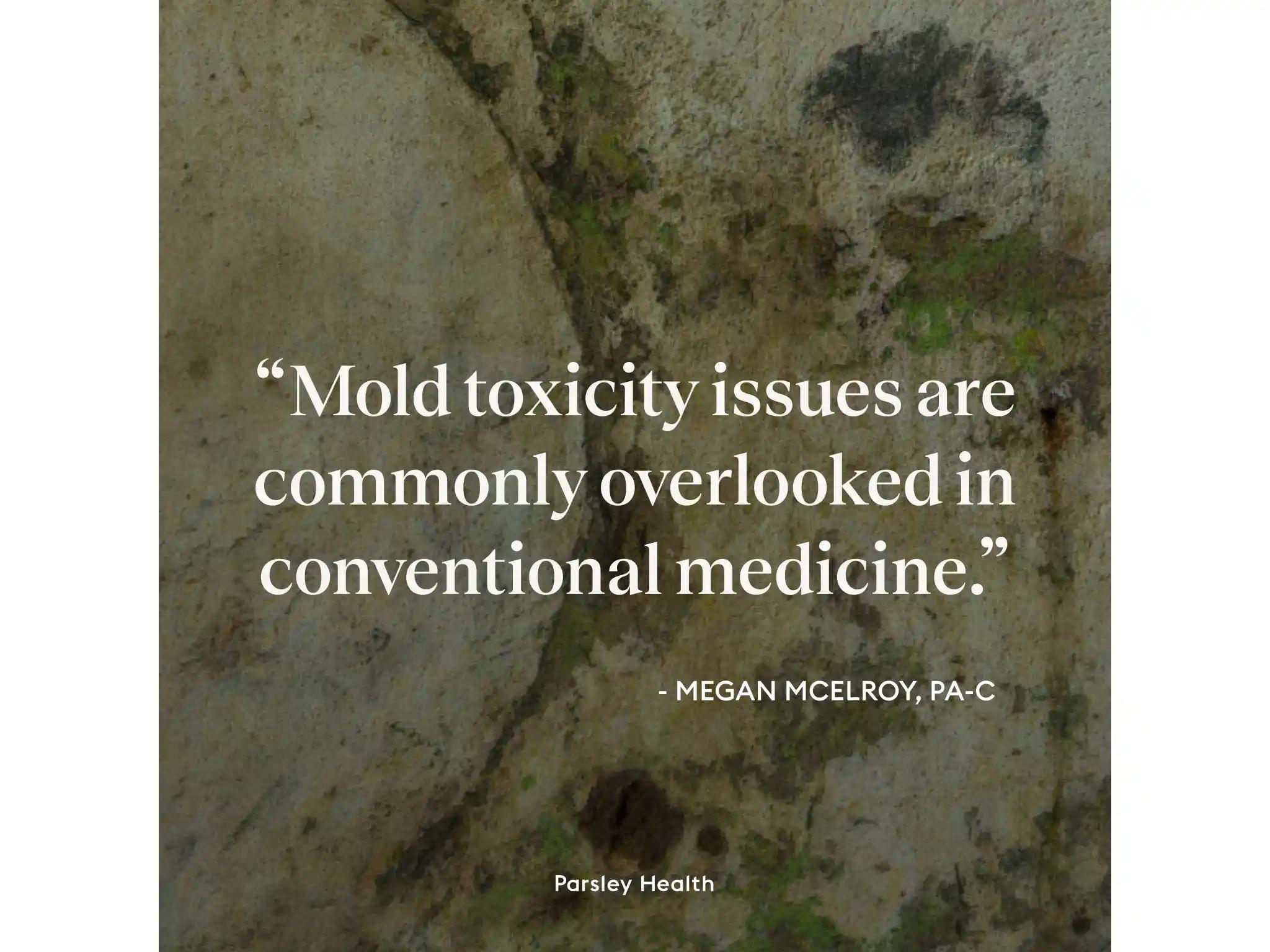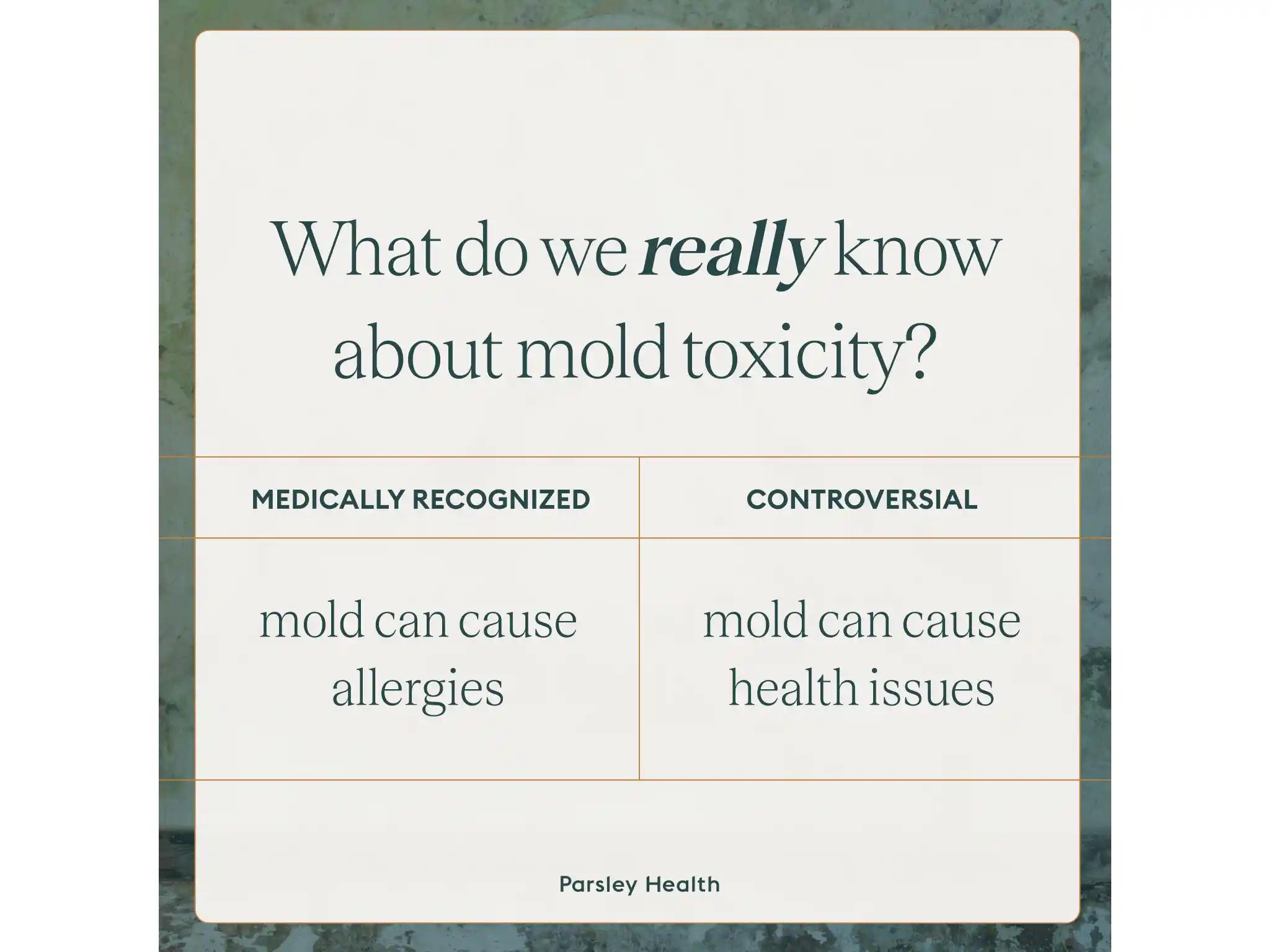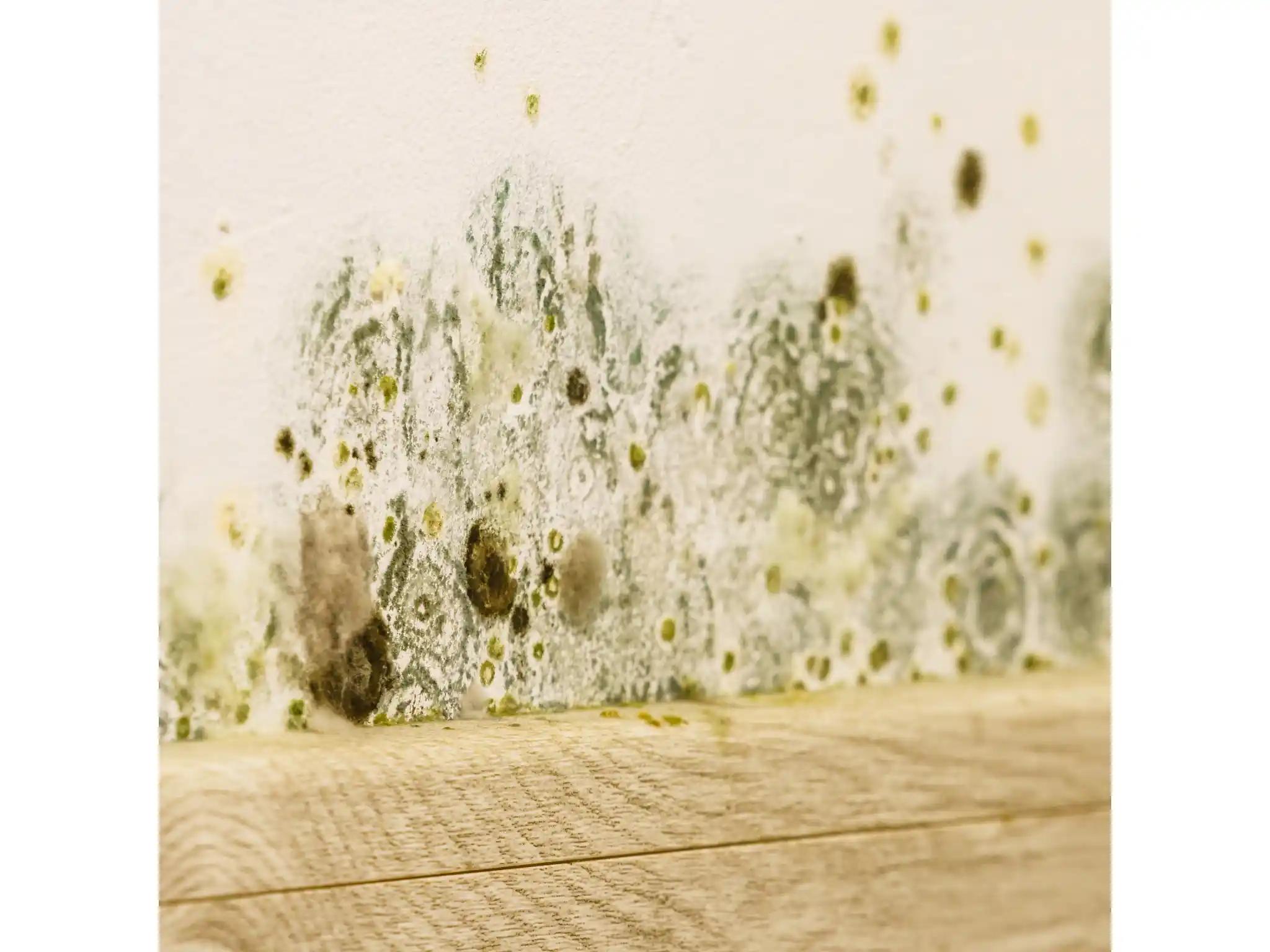This article has been medically reviewed by Nisha Chellam, MD, and contains additional reporting by Jennifer Chesak.
Symptoms from mold exposure are real and affect people every year, including homeowners, renters, and employees working in environments prone to mold exposure.
Symptoms vary—from cognitive issues, like brain fog, to allergic reactions, such as coughing and sneezing. The range of symptoms can make mold toxicity difficult to diagnose, especially since it can mimic other conditions, such as asthma.
While diagnostic mysteries about unexplained symptoms are interesting to watch on your favorite medical show, experiencing them firsthand is frustrating. The good news? Mold exposure symptoms can be combated if you know what to look for.
Yet the effects of mold are often misdiagnosed, undiagnosed, or left untreated in conventional medicine. Sometimes getting answers means looking beyond standard tests. At Parsley Health, our clinicians often use functional labs—especially for women—to see the bigger picture and uncover whether mold might be part of the story.
What is mold toxicity?
When you’re exposed to too much mold, spores that you’re sensitive to, or certain types of mold known to cause health issues, you can develop a condition called mold toxicity.
Different types of mold are around us all the time, but some are more dangerous than others. Some people have mold allergies or sensitivity to the naturally occurring toxins, called mycotoxins, that mold can emit. People with weakened immune systems from various conditions may also be more susceptible to mold toxicity.
Mold is a common fungus that grows in places with a high humidity level, like basements or bathrooms, or a lot of moisture, like roofs, pipes, wood and tile floors, and ceiling tiles. These are places where water leaks can occur, creating an environment where mold can flourish.
You can be exposed to mold at home or where you work. Structures and buildings with poor ventilation, plumbing, drainage, and more are prone to mold growth.
Mold and other fungi can also grow in soil, especially in areas with high rainfall and humidity or with lots of decaying vegetation. And mold can grow in water, including tap sources. Exposure can occur from water vapor emitted while showering, washing hands or brushing teeth, flushing toilets, and more.
Mold that grows in soil and water typically doesn't pose a threat to the general population. But for people who have weakened immune systems or sensitivities, these molds may cause symptoms.
According to Megan McElroy, PA-C, a physician assistant at Parsley Health: “Mold toxicity issues are commonly overlooked in conventional medicine.”

Mold toxicity can cause a wide range of symptoms that can be hard for you to describe. Your provider may also have a hard time piecing together why you're experiencing certain symptoms. This is especially true if they don’t have experience and training in mold issues. However, your symptoms may not be related to mold but caused by something else entirely.









